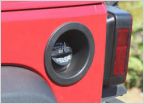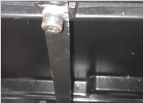-
Welcome to Tacoma World!
You are currently viewing as a guest! To get full-access, you need to register for a FREE account.
As a registered member, you’ll be able to:- Participate in all Tacoma discussion topics
- Communicate privately with other Tacoma owners from around the world
- Post your own photos in our Members Gallery
- Access all special features of the site
Meso stealth pro knob help
Discussion in '3rd Gen. Tacomas (2016-2023)' started by poke_taco, Dec 5, 2019.


 Clicking/Knocking on front drivers side
Clicking/Knocking on front drivers side Changing the fuel door?
Changing the fuel door? Third gen tailgate strength
Third gen tailgate strength Best fishing mods
Best fishing mods Driveline fluids.
Driveline fluids. 2017 Tacoma Front Brakes... suggestions
2017 Tacoma Front Brakes... suggestions














































































